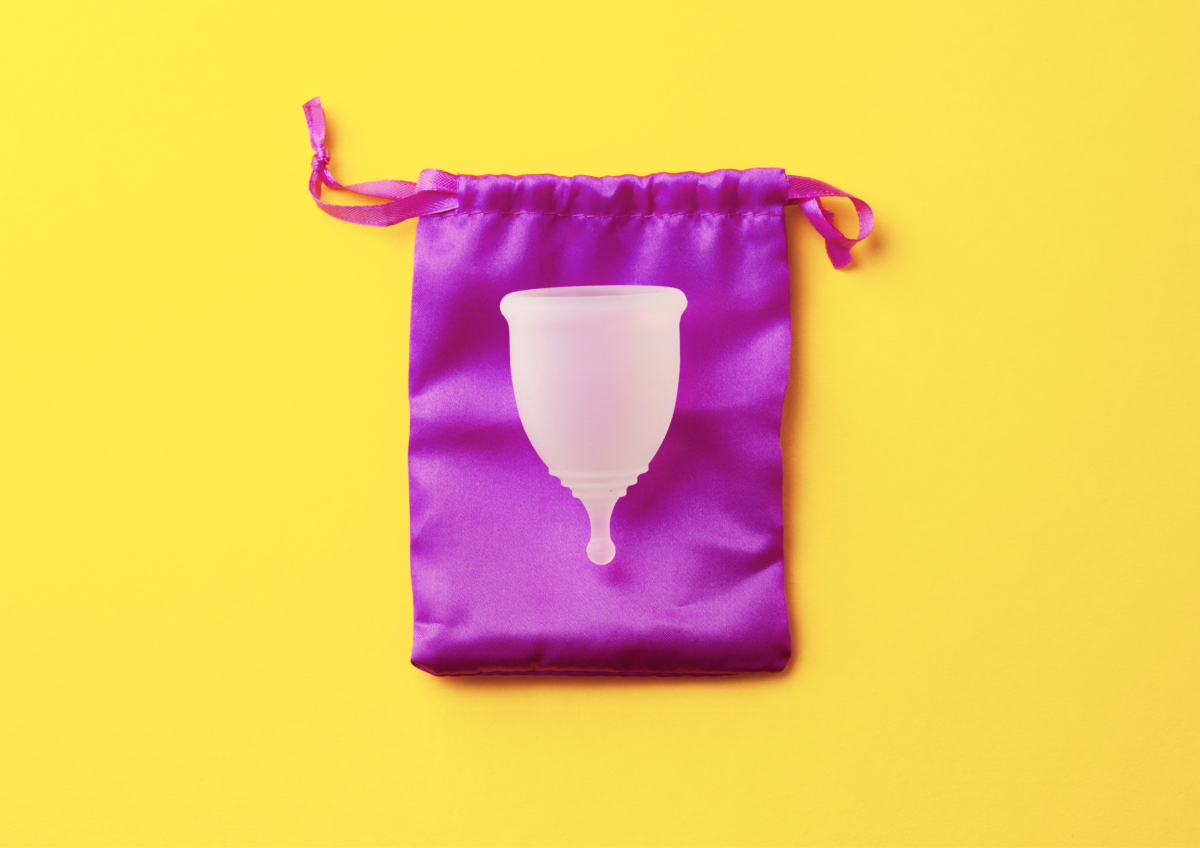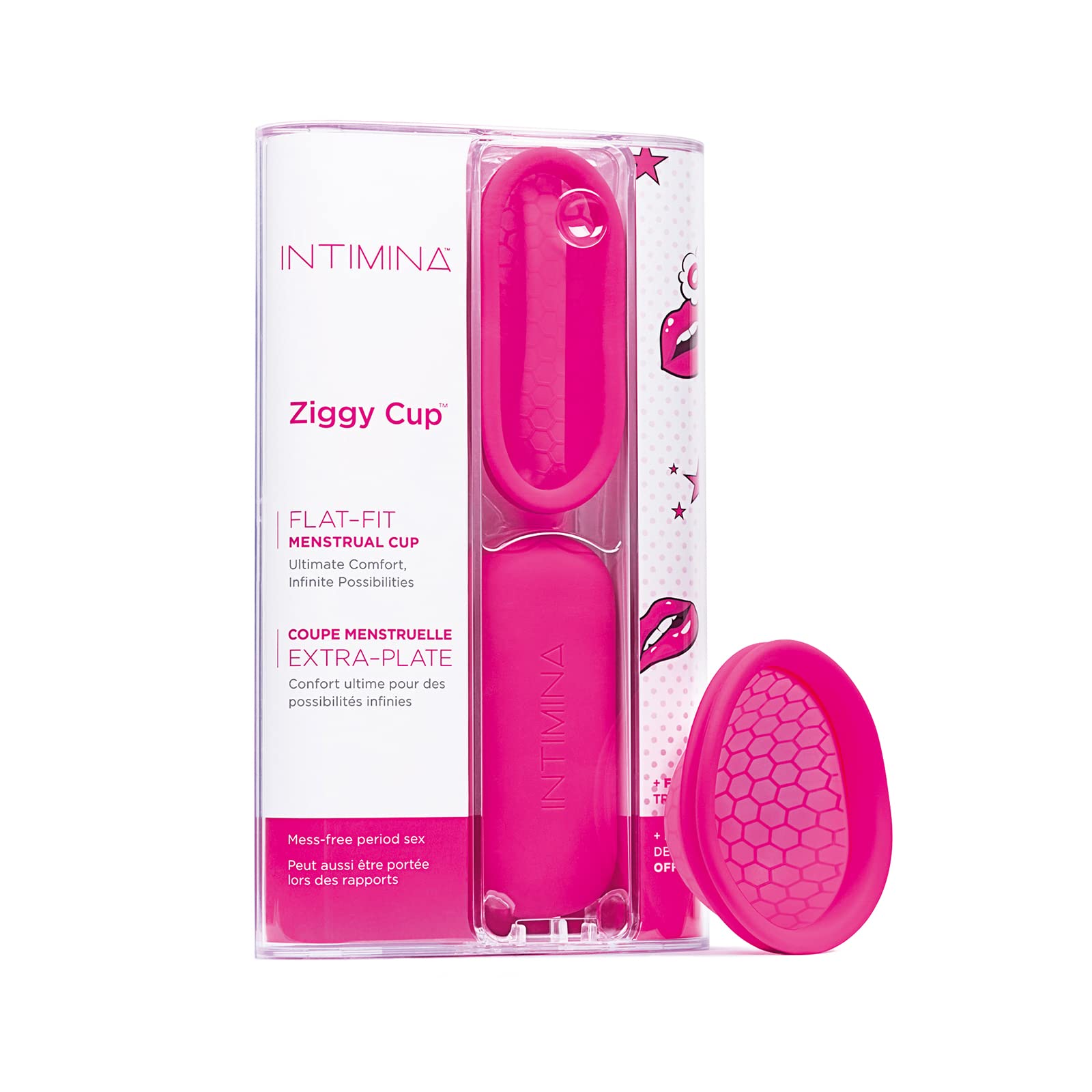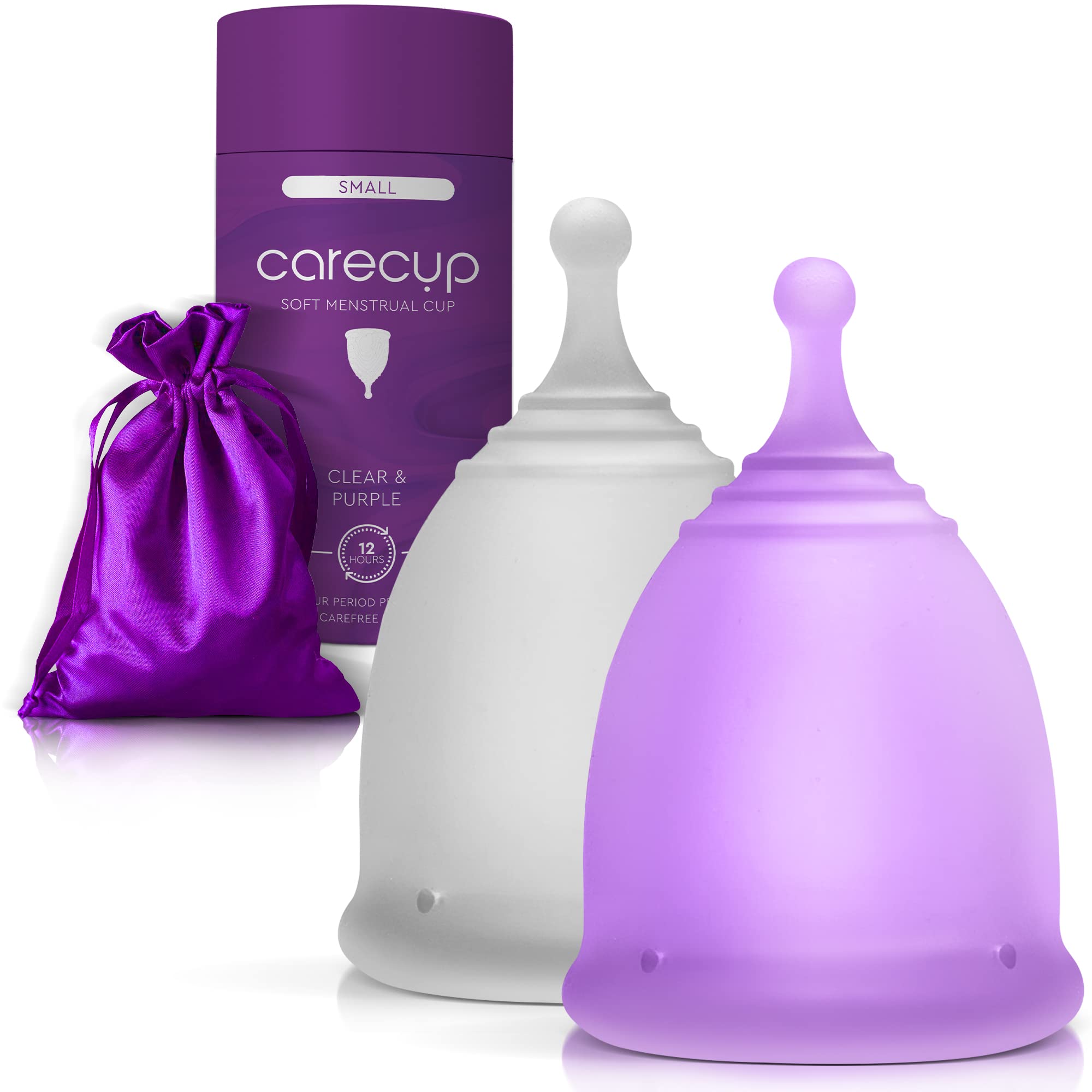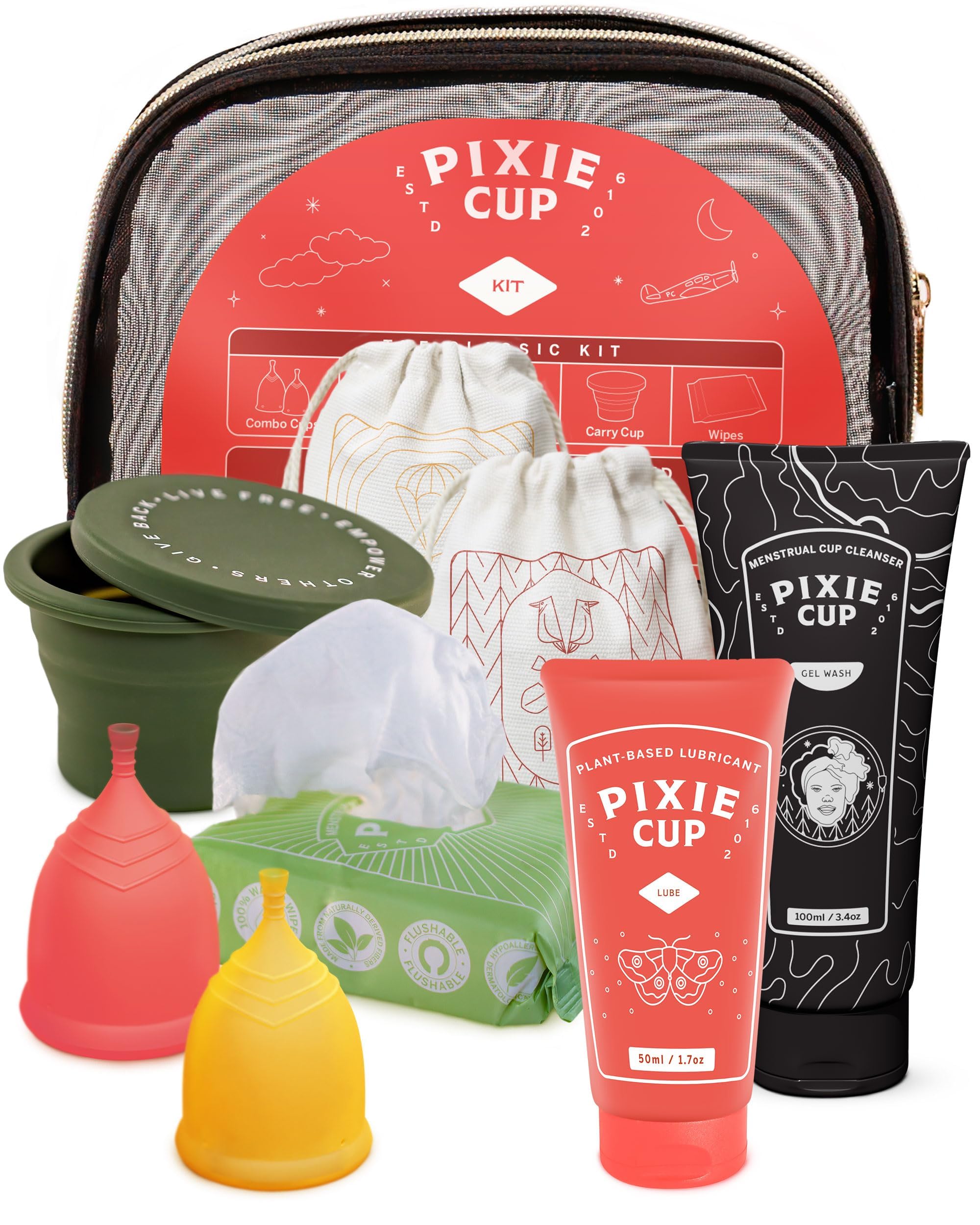
Menstrual cups are a sustainable and reusable alternative to tampons and pads. They are made from flexible, medical-grade silicone or rubber and can be worn for up to 12 hours. Unlike other options, menstrual cups can last for years with proper care, making them a cost-effective choice. They also reduce waste, which is better for the environment.
When choosing a menstrual cup, it’s important to consider the size, material, and shape. The size usually depends on one’s age and childbirth history. Most brands offer small and large sizes to fit different anatomies. Material is also crucial; medical-grade silicone is the most common and trusted option. Some cups may be firmer or softer, affecting how they feel and fit.
We spent countless hours researching and testing various menstrual cups to identify the brands that offer the best comfort, ease of use, and reliability.
Best Menstrual Cups
Here is our comprehensive list of the best menstrual cups. We have selected these based on comfort, ease of use, and customer reviews.
Intimina Lily Cup One

This is the perfect menstrual cup for beginners who are looking for a reliable and environmentally friendly cup.
Pros
- Easy to use, even for new users
- Collapsible and portable with a convenient case
- Made from medical-grade silicone, free from harmful chemicals
Cons
- Some users find the rim too firm for comfort
- May be too small for heavy flow days
- The learning curve for proper placement and removal
We found the Intimina Lily Cup One to be quite user-friendly. Its collapsible design makes it easy to carry around discreetly, so we could take it anywhere without hassle. The medical-grade silicone felt safe and non-irritating, which is important for sensitive skin.
For those new to menstrual cups, this one stands out because it’s straightforward to use. The removal loop was especially helpful in getting the cup out without much fuss. Despite some difficulties, such as the stiff rim making folding tricky, it opens up easily once inserted.
While it’s great for lighter days, it might not hold enough for heavy periods. We had to adjust the placement to avoid leaks, but once we got the hang of it, it was very effective. This cup is a solid choice for anyone starting their reusable menstrual product journey.
Intimina Ziggy Cup

This menstrual cup offers comfort, flexibility, and eco-friendly benefits, making it a great choice for many women.
Pros
- Extremely comfortable and easy to forget it’s there
- Can be worn during sex
- High-capacity and leak-proof design
Cons
- Requires practice to use correctly
- Can be tricky to position for first-time users
- Not suitable for everyone
We’ve had the chance to use the Intimina Ziggy Cup, and it has proven to be a game-changer in menstrual care. The innovative flat-fit design means it’s practically invisible once inserted. We appreciate how it offers up to 12 hours of protection, making it ideal for both daytime activities and overnight use.
Using the Ziggy Cup is simple with a bit of practice. Its ultra-thin body and flexible material allow for easy insertion and a comfortable fit. However, positioning the cup can be tricky at first, especially for those new to menstrual cups. It sits just below the cervix, ensuring you won’t feel a thing during wear.
The environmentally friendly aspect of the Ziggy Cup is another major plus. Made from medical-grade silicone, it’s BPA-free and hypoallergenic. Plus, it’s reusable for up to two years, which reduces waste and saves money. While learning to use it might take some time, the benefits are well worth the effort.
Saalt Soft Menstrual Cup

For those who need a comfortable and reliable menstrual cup, the Saalt Soft Menstrual Cup might be the perfect choice.
Pros
- Extremely comfy for sensitive users
- Easy to insert and remove
- Chemical-free and natural
Cons
- It might take time to get used to
- Can be tricky to clean
- It needs re-positioning for some users
The Saalt Soft Menstrual Cup offers an impressive combination of comfort and usability. Its ultra-soft silicone makes it easy on the bladder and gentle enough for those who experience cramping or discomfort with firmer cups. We found that even on heavy days, it stayed in place without causing any leaks.
One of the standout features is its smooth, velvety finish. This makes insertion and removal much easier compared to other cups. Additionally, we appreciated that it’s hypoallergenic and free from harmful chemicals, providing peace of mind along with reliable performance.
Despite these advantages, there are a few drawbacks. Adjusting to using the cup can take some time, and cleaning it properly requires some effort. Some users may also need to re-position the cup to ensure a perfect fit. All in all, though, the Saalt Soft Menstrual Cup stands out as an excellent option for those seeking a gentler period solution.
CareCup Menstrual Cups

Menstrual cups of CareCup provide a dependable, eco-friendly solution for handling periods with ease.
Pros
- Reliable 12-hour leak protection
- Comfortable fit for active lifestyles
- Long-lasting and eco-friendly
Cons
- Can be tricky to insert it initially
- May take time to get used to
- Size may not fit everyone perfectly
We’ve tried the CareCup menstrual cups ourselves, and they are quite impressive. The 12-hour leak-proof protection gives us peace of mind throughout the day, no matter what activities we have planned. The flexibility and comfort are perfect for swimming, running, or just going about our daily routines without any interruptions.
One thing to note, though, is that the initial insertion can be a bit challenging, especially if you are new to menstrual cups. It took us a few tries to get it right, but once we got the hang of it, it was smooth sailing. Watching a few tutorial videos can help with the learning curve.
For anyone making the switch to a more sustainable period solution, these cups are an excellent choice. They’re not only comfortable but also economically smart as they last for years. With CareCup, we feel confident and ready to take on anything.
Pixie Cup Starter Kit

This product is a great investment for anyone looking to switch to menstrual cups with ease.
Pros
- Includes two different sizes
- Comes with Pixie Lube and Pixie Wash
- Generous 12-hour wear time
Cons
- May not fit everyone perfectly
- Initial learning curve
- Larger size can be uncomfortable for some
The Pixie Cup Starter Kit is a comprehensive package. It comes with two different cup sizes, making it easier for users to find the perfect fit. Also included are Pixie Lube, Pixie Wash, and several Pixie Wipes. This kit covers all the bases for anyone new to using menstrual cups.
We found the 12-hour wear time extremely convenient. It offers peace of mind, especially during a busy day. It’s a relief not having to constantly worry about changing sanitary products.
Though there is an initial learning curve, the investment in time is worth it. Once we got the hang of it, the benefits far outweighed the minor inconveniences. The larger cup size may be uncomfortable for some, but the smaller one worked well closer to the end of the cycle.
Perfect for those ready to switch and looking for a reliable, all-in-one kit.
Buying Guide
Size
Picking the right size is important. Menstrual cups often come in small, medium, and large. Our decision might depend on factors like age, childbirth history, and flow level. For instance, someone who hasn’t given birth may prefer a smaller size.
Material
Most menstrual cups are made of medical-grade silicone, latex, or elastomer. Let’s make sure it’s hypoallergenic and safe for our bodies. Silicone is often recommended for its flexibility and comfort.
Firmness
The firmness of a cup affects comfort and how well it pops open. A firmer cup might be easier to open but less comfortable for some. On the other hand, a softer cup is more comfortable but might require more practice to get the hang of.
Capacity
Different cups hold different amounts of fluid. We need to think about our flow and how long we plan to wear the cup. A higher capacity is useful for heavier flows or longer wear times.
Stem Style
The stem helps with removal. Some cups have short stems, and some have long ones. They can be solid, hollow, or have a ball shape. We should check what feels most comfortable for us.
Price
Costs can vary widely. It’s worth investing in a good-quality cup. They can last for years with proper care, so a higher initial cost often balances out over time.
Cleaning and Maintenance
Proper cleaning is crucial. Some cups come with cleaning kits or storage bags. Let’s ensure we’re comfortable with the cleaning process to keep it sanitary and long-lasting.
Advantages of Using a Menstrual Cup
Why might a woman prefer a menstrual cup over sanitary pads? The benefits of using the cup include:
- Lower chance of allergies: Modern menstrual cups are free of phthalates, dyes, bleaches, whiteners, fragrances, and BPA. Therefore, they are better suited for people with allergies and are gentler on sensitive skin. In contrast, sanitary pads can cause redness, discomfort, and burning.
- Practicality: The use of a menstrual cup is quite simple and practical.
- Storage capacity: It has been proven that a menstrual cup is as efficient as any external or internal pad and can be changed less frequently.
- Compatible material: The material it is made from is compatible with the body’s internal tissues.
- Does not dry out: Since the cup’s function is to collect rather than absorb the menstrual flow, it does not leave the intimate area dry or less lubricated.
- Economy: With its high durability, a menstrual cup can lead to medium-term cost savings.
- Freedom: With the cup, you can feel more at ease to go about your activities during the menstrual cycle.
What Care Should Be Taken When Using a Menstrual Cup?
Experts recommend the following care:
- Wash the cup once a day with water and soap.
- Perform proper maintenance and sterilization at the end of the bleeding phase and before the next use. Simply boil it in water wash it with baking soda, or use hypoallergenic disinfectants.
- Although not necessary in all cases, you can use creams to lubricate the vaginal walls before inserting the cup.
When Is Its Use Not Recommended?
All women can use a menstrual cup without problems. There are no contraindications except in some specific cases. What are they?
- After childbirth: Since the uterus is generally not fully closed immediately after childbirth, it is advisable to avoid using the cup until you can consult your general practitioner or, even better, your gynecologist about the conditions for use.
- Presence of infections: Its use is not recommended in the presence of yeast infections. Unfortunately, spores can be contained in the cup and thus prolong the persistence of the infection and mask the treatment.
How to Use a Menstrual Cup?
The first thing to know is that menstrual cups come in different sizes and can be purchased online and at pharmacies. So, the first step is to understand your size with the help of a specialist.
The size of the cup depends on several factors, such as the length of the cervix or age, among others.
In general, smaller menstrual cups are recommended for women under 30 who have not given birth vaginally.
Larger sizes are suitable for women over 30, who have given birth naturally, or who have a particularly heavy flow.
How to Insert the Menstrual Cup Step by Step
Inserting a menstrual cup is not more difficult than inserting an internal pad. Follow these steps:
1. Wash your hands.
2. If necessary, apply a lubricant to the sides or rim of the cup.
3. Fold it in half, with the rim facing up.
4. Insert the cup into the vagina, a few centimeters below the cervix.
5. Once inside, it will open and block any leakage.
FAQ – Frequently Asked Questions About Menstrual Cups
1. How to insert and remove the menstrual cup correctly?
To insert the menstrual cup, fold it according to the brand’s instructions and insert it into the vagina similarly to a tampon. To remove it, gently press the base to release the vacuum and then gently pull it out by the edges.
2. What is the durability of a menstrual cup?
Generally, a high-quality menstrual cup can last up to 10 years with proper maintenance and cleaning.
3. Is it possible to have leaks while using a menstrual cup?
With correct insertion and the right size, leaks are rare. Learning to position it correctly is essential to avoid leaks.
4. Is the menstrual cup safe for those with allergies or vaginal sensitivity?
Many menstrual cups are made of hypoallergenic silicone, making them safe for most people. However, if you have any sensitivity, it is advisable to consult a doctor before use.
5. Can you use the menstrual cup overnight?
Yes, the menstrual cup can be used for up to 12 hours, which generally makes it safe for overnight use.
6. How to choose the correct size of the menstrual cup?
The choice of size depends on menstrual flow and your body’s anatomy. Generally, most brands offer small and large size options. Follow the brand’s guidelines to determine the most suitable size for you.
7. Can the menstrual cup be used by women who have not had children?
Yes, there are menstrual cup options designed specifically for women who have never had children. They are usually slightly smaller and easier to insert.
8. How to clean the menstrual cup?
Before and after use, wash the cup with water and mild soap. Between menstrual cycles, it is recommended to sterilize it by boiling it in water for a few minutes.
9. Is the menstrual cup noticeable or uncomfortable?
When inserted correctly, the menstrual cup is almost imperceptible and should not cause discomfort. It is important to learn to insert it properly to ensure comfort during use.
10. Is the menstrual cup environmentally friendly?
Yes, the menstrual cup is highly sustainable as it reduces the amount of waste associated with disposable pads.
11. What is the difference between a menstrual disc and a menstrual cup?
Like the cup, the menstrual disc also collects blood, but there are some differences between them, such as shape and positioning (the disc is closer to the cervix), making it more difficult to insert; the disc does not need to create a vacuum.
These frequently asked questions are common among those considering adopting the menstrual cup as an alternative to traditional menstrual hygiene methods. If you still have specific questions, do not hesitate to seek more information or guidance from a healthcare professional.
Did you like the post? Then share it with friends and help us reach more people.








